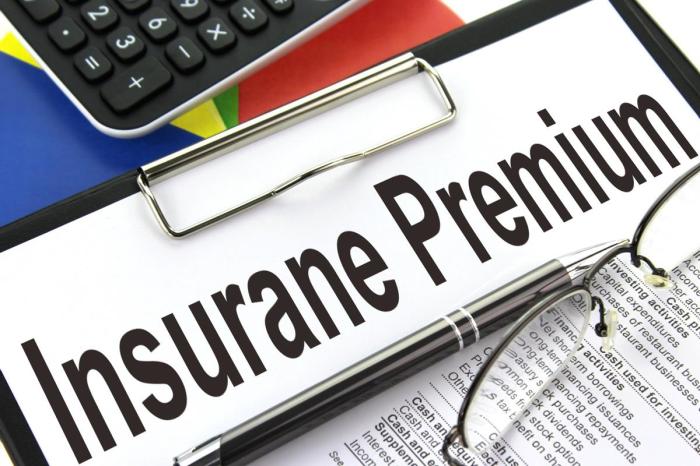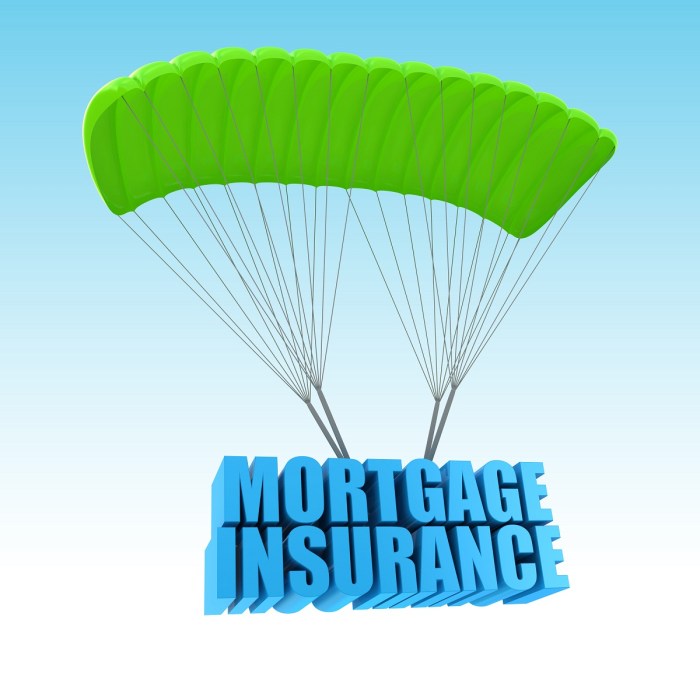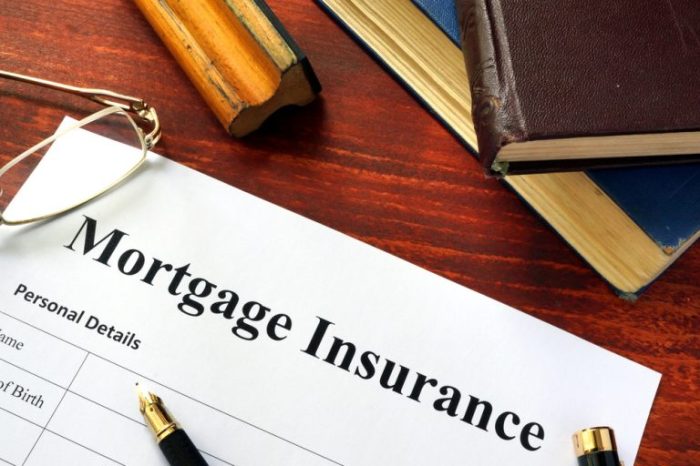Securing a mortgage is a significant financial undertaking, and understanding all associated costs is crucial. One often overlooked yet vital component is the mortgage loan insurance premium. This seemingly small detail can significantly impact your overall borrowing costs and long-term financial health. This guide provides a clear and concise overview of mortgage loan insurance premiums, helping you navigate the complexities and make informed decisions.
From defining the purpose and function of these premiums to exploring the various factors influencing their calculation, we’ll cover everything from the different types of mortgage insurance available to strategies for minimizing costs. We will also address common questions and concerns to ensure you feel confident and empowered throughout the mortgage process.
Definition and Purpose of Mortgage Loan Insurance Premium

Mortgage loan insurance premiums are essentially a form of insurance designed to protect lenders against losses incurred if a borrower defaults on their mortgage payments. They act as a safety net, ensuring the lender can recoup some or all of the loan amount even if the property’s value falls below the outstanding loan balance. This protection encourages lenders to offer mortgages to borrowers who might otherwise be considered higher risk.
The primary function of these premiums is to mitigate the lender’s risk. By requiring borrowers to pay premiums, lenders can reduce their exposure to potential losses from defaults. This allows them to offer more competitive interest rates and potentially approve more loans. The premiums are paid into a pool of funds that are used to compensate lenders in the event of foreclosure and subsequent sale of the property at a price less than the outstanding mortgage balance.
Circumstances Requiring Mortgage Loan Insurance Premiums
Mortgage loan insurance premiums are typically required when a borrower makes a down payment of less than 20% of the home’s purchase price. This is because a smaller down payment increases the lender’s risk. If the borrower defaults and the home is foreclosed upon, the lender may not be able to recover the full loan amount if the property’s value has decreased. In such situations, the insurance acts as a buffer, covering the difference between the property’s sale price and the outstanding loan balance. Other circumstances might include certain loan types or borrower credit profiles deemed higher risk by the lender.
Who Pays the Mortgage Loan Insurance Premium
The borrower is typically responsible for paying the mortgage loan insurance premium. This payment is usually added to the monthly mortgage payment, making it a part of the overall housing cost. While the lender benefits from the insurance, they do not directly pay the premium. The premium payments are made by the borrower to the insurance provider, thus protecting the lender’s investment.
Comparison of Private Mortgage Insurance (PMI) and Government-Backed Mortgage Insurance
| Feature | Private Mortgage Insurance (PMI) | Government-Backed Mortgage Insurance (e.g., FHA, VA) |
|---|---|---|
| Provider | Private insurance companies | Government agencies (e.g., FHA, VA) |
| Eligibility Requirements | Typically requires a down payment less than 20%, specific credit score thresholds | Specific requirements vary depending on the program (e.g., FHA, VA), but often have more lenient credit score requirements |
| Premium Costs | Generally higher than government-backed insurance | Generally lower than private insurance |
| Cancellation | Usually cancelled automatically once the borrower reaches 20% equity in the home (loan-to-value ratio of 80%) | Cancellation rules vary depending on the program and the terms of the loan |
Factors Affecting Mortgage Loan Insurance Premium Amounts
Several key factors influence the calculation of mortgage loan insurance premiums. Understanding these factors can help borrowers anticipate and potentially manage their insurance costs. These factors interact in complex ways, so it’s crucial to consider them holistically.
Loan-to-Value Ratio (LTV) and Premium Costs
The loan-to-value ratio (LTV) is a pivotal determinant of mortgage insurance premiums. LTV represents the loan amount as a percentage of the home’s appraised value. A higher LTV indicates a larger loan relative to the property’s worth, signifying a greater risk for the lender. Consequently, a higher LTV typically results in higher mortgage insurance premiums. For example, a borrower with an 80% LTV will generally pay a lower premium than a borrower with a 95% LTV on the same property. This is because the lender perceives less risk with a smaller loan amount. The relationship between LTV and premium is often non-linear; the increase in premium accelerates as the LTV approaches 100%.
Credit Score’s Influence on Premium Rates
A borrower’s credit score significantly impacts the cost of mortgage loan insurance. Lenders use credit scores to assess the likelihood of loan repayment. A higher credit score demonstrates a lower risk of default, leading to lower premiums. Conversely, a lower credit score signals a higher risk, resulting in higher premiums or even a denial of insurance coverage. For instance, a borrower with a credit score above 740 might qualify for significantly lower premiums compared to a borrower with a score below 660. The impact of credit score varies depending on the type of mortgage and the insurer.
Comparison of Premium Rates Across Mortgage Types
Different types of mortgages have varying premium structures. Conventional loans, FHA loans, and VA loans all have distinct insurance requirements and cost implications.
Conventional loans often require private mortgage insurance (PMI) if the LTV exceeds 80%. PMI premiums are generally lower than those for FHA loans, but the exact amount depends on factors like LTV and credit score.
FHA loans, insured by the Federal Housing Administration, require upfront and annual premiums. These premiums are generally higher than PMI for conventional loans, especially for borrowers with lower credit scores or higher LTVs. The FHA’s goal is to expand homeownership opportunities, but this comes with a cost.
VA loans, guaranteed by the Department of Veterans Affairs, typically don’t require mortgage insurance in the traditional sense. However, they may have a funding fee, which is similar to an upfront premium. This fee varies based on the veteran’s service history and the loan amount. The funding fee is usually less expensive than PMI or FHA premiums, reflecting the lower risk associated with VA-backed loans due to the government guarantee.
Cost Comparison and Savings Strategies

Understanding the true cost of mortgage loan insurance requires careful comparison across different lenders and a proactive approach to minimizing premiums. Several strategies can significantly reduce the overall financial burden, leading to substantial long-term savings. This section will explore cost comparisons, savings strategies, and the impact of various loan options on insurance costs.
Comparing mortgage insurance costs across different lenders is crucial. Rates and terms can vary significantly, even for borrowers with similar credit profiles and loan amounts. It’s essential to obtain quotes from multiple lenders to identify the most competitive options. Factors such as the lender’s relationship with insurance providers and their internal pricing models can influence the final premium. For example, a lender with a strong partnership with a specific insurance company might offer lower rates, while another lender might prioritize a broader range of insurance options to cater to various borrower needs. This comparative shopping is a fundamental step in ensuring you secure the best possible deal.
Mortgage Insurance Premium Minimization Strategies
Several strategies can help borrowers minimize their mortgage loan insurance premiums. These strategies focus on improving creditworthiness, increasing down payments, and selecting loan types that minimize or eliminate the need for insurance altogether.
- Improve Credit Score: A higher credit score often translates to lower insurance premiums. Credit scores reflect your creditworthiness, and lenders use this information to assess risk. A higher score demonstrates lower risk, resulting in more favorable insurance terms. For example, a borrower with a credit score of 760 might qualify for a lower premium than someone with a score of 680, even with the same loan amount and down payment.
- Increase Down Payment: A larger down payment significantly reduces the loan-to-value (LTV) ratio. This, in turn, lowers the risk for the lender, leading to lower or even eliminated mortgage insurance premiums. A 20% down payment is often the threshold for avoiding private mortgage insurance (PMI) on conventional loans. For instance, a $300,000 home with a 20% down payment ($60,000) reduces the loan amount to $240,000, significantly lowering the insurance risk and potential premium.
- Choose a Loan with Lower Insurance Requirements: Different loan types have varying insurance requirements. For example, FHA loans typically require mortgage insurance premiums (MIP) regardless of the down payment, while VA loans often don’t require mortgage insurance for eligible veterans. A thorough understanding of loan options and their associated insurance costs is essential to making an informed decision.
Impact of Loan Options on Total Insurance Costs
The choice of loan significantly impacts the total cost of insurance. Comparing the long-term financial implications of different loan options is crucial. This involves analyzing not only the initial insurance premiums but also the overall interest paid over the life of the loan.
| Loan Type | Down Payment | Mortgage Insurance | Example Monthly Payment (Principal, Interest, Taxes, Insurance) | Total Insurance Cost Over Loan Term |
|---|---|---|---|---|
| Conventional Loan | 5% | PMI (estimated) | $2,500 | $20,000 |
| FHA Loan | 3.5% | MIP (estimated) | $2,300 | $30,000 |
| VA Loan (Eligible Veteran) | 0% | None | $2,200 | $0 |
Note: These are illustrative examples and actual costs will vary depending on several factors including loan amount, interest rate, property location, and individual borrower circumstances.
Long-Term Financial Implications of Insurance Options
The long-term financial impact of choosing different mortgage insurance options can be substantial. The cumulative cost of insurance over the life of the loan can significantly affect the overall affordability and long-term financial health of the borrower. For instance, paying PMI for several years can add tens of thousands of dollars to the total cost of the home. Conversely, opting for a loan with lower or no mortgage insurance can result in significant long-term savings. Careful consideration of these long-term financial implications is crucial when choosing a mortgage and insurance plan.
Final Review

Navigating the world of mortgage loan insurance premiums can seem daunting, but with a thorough understanding of the factors involved, you can make informed decisions that protect your financial future. By carefully considering your loan-to-value ratio, credit score, and the type of mortgage you choose, you can effectively manage and potentially minimize your premium costs. Remember to always shop around and compare options from different lenders to find the best possible terms for your individual circumstances. Armed with this knowledge, you can confidently proceed with your mortgage application, secure in the understanding of your financial obligations.
FAQs
What happens if I can’t afford my mortgage loan insurance premium?
Failure to pay your mortgage loan insurance premium can lead to serious consequences, including cancellation of your insurance coverage, which could jeopardize your mortgage and potentially lead to foreclosure. Contact your lender immediately if you anticipate difficulties in making payments to explore possible solutions.
Can I refinance to get rid of my PMI?
Refinancing your mortgage might allow you to eliminate PMI if your loan-to-value ratio (LTV) improves to 80% or less. However, refinancing involves costs, so carefully weigh the benefits against these additional expenses.
Is mortgage insurance tax deductible?
The deductibility of mortgage insurance premiums depends on your specific circumstances and the type of insurance you have. Consult a tax professional for personalized advice.
How long will I have to pay PMI?
The duration of PMI payments varies depending on your loan and lender. Typically, PMI is canceled once your LTV reaches a certain threshold (usually 80%), but this can take several years. Some loans may have PMI for the entire loan term.